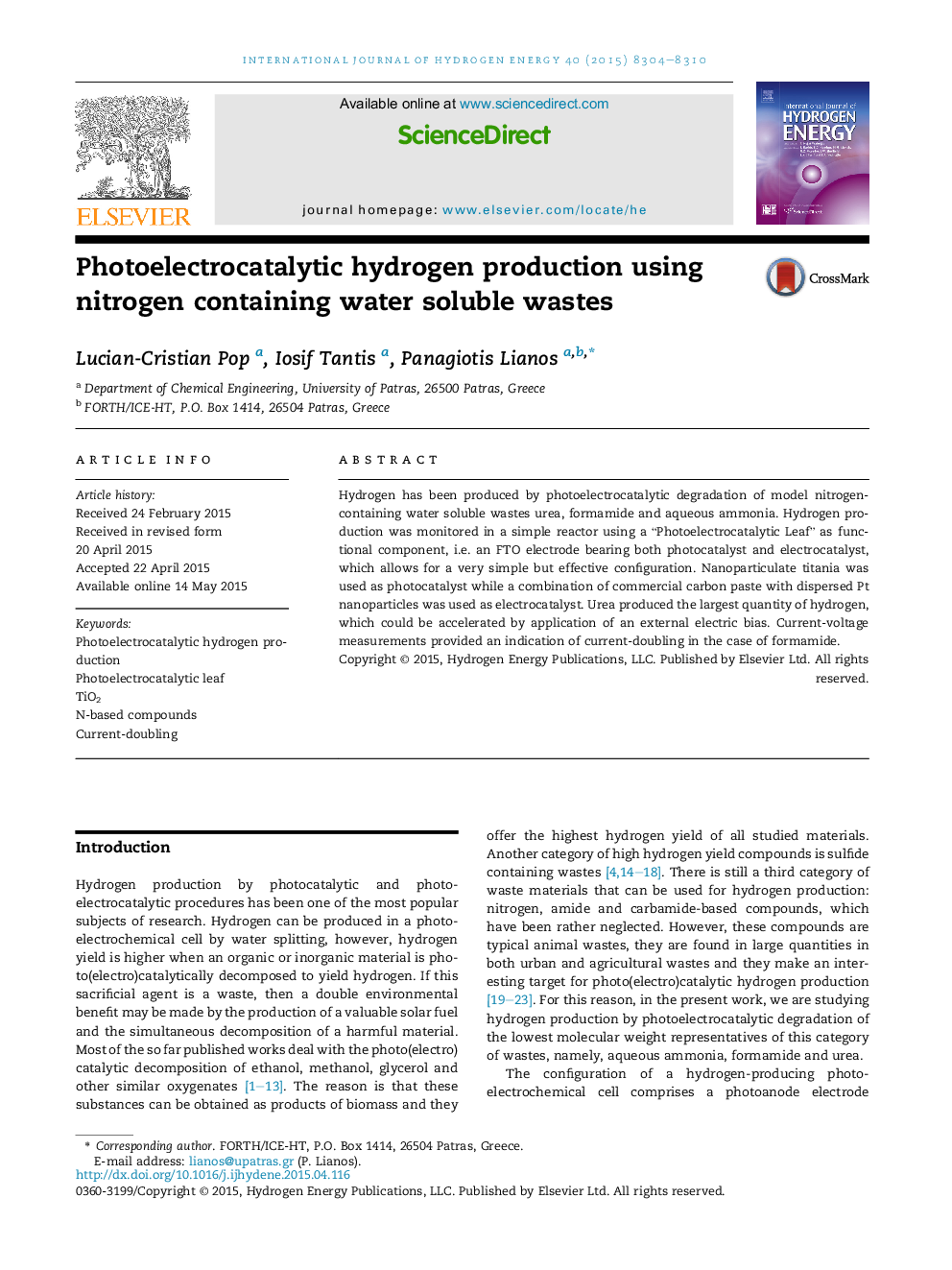| Article ID | Journal | Published Year | Pages | File Type |
|---|---|---|---|---|
| 1270710 | International Journal of Hydrogen Energy | 2015 | 7 Pages |
•Photoelectrochemical treatment of aqueous ammonia, formamide and urea.•Hydrogen production by photoelectrochemical treatment of N-based materials.•Models for photoelectrochemical treatment of low molecular weight N-based compounds.•Current flow in the presence of N-based compounds.
Hydrogen has been produced by photoelectrocatalytic degradation of model nitrogen-containing water soluble wastes urea, formamide and aqueous ammonia. Hydrogen production was monitored in a simple reactor using a “Photoelectrocatalytic Leaf” as functional component, i.e. an FTO electrode bearing both photocatalyst and electrocatalyst, which allows for a very simple but effective configuration. Nanoparticulate titania was used as photocatalyst while a combination of commercial carbon paste with dispersed Pt nanoparticles was used as electrocatalyst. Urea produced the largest quantity of hydrogen, which could be accelerated by application of an external electric bias. Current-voltage measurements provided an indication of current-doubling in the case of formamide.
Graphical abstractFigure optionsDownload full-size imageDownload as PowerPoint slide
